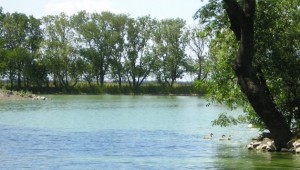Shale gas extraction is accompanied with the use of significant amounts of water that is pumped into a well with sand and chemicals for hydraulic fracturing and wells’ drilling, testing of pipelines and processing of extracted gas.
In the North America, the volume of water used for drilling of one well usually constitutes 1000-2000 cubic meters, while for one well hydraulic fracturing some 10 000 – 20 000 cubic meters may be necessary.
According to the study ““, the main factors influencing the water use include the following:
- depth, length, and a number of horizontal segments of a well;
- geological parameters of a deposit (depth, thickness and density of the shale rocks).
In the process of shale gas extraction the water from surface sources, centralized water supply systems, groundwater sources, and, partially, the return water from previous wells can be used. The choice of the water supply source depends on local conditions, legislation and economic factors.
The study ““, prepared with the support of the Department of Energy, points that the share of water used for shale gas extraction ranges from 0.1% to 0.8% of the total water consumption (industry, agriculture, population) of the shale extraction regions. However, the use of large amounts of water for shale gas extraction may increase the competition for water sources in areas with water deficiency.
The part of the water pumped into the well returns to the surface along with the natural gas. The returned liquid, though, includes not only the flow back water (the one pumped to the well for hydraulic fracturing), but also the produced water (the water fixed in the shale and released due to fracking). This mix may have high salt content and contain organic compounds, metals and naturally occurring radioactive materials. Return water after the treatment can be used again in other wells, pumped into disposal wells or stored on the surface in special tanks. In the United States it is prohibited to discharge return water into the surface water reservoirs without pre-treatment.
In parallel, new generation shale gas extraction technologies with minimum water consumption (prescribing the use of liquid propane, carbon dioxide, nitrogen and gels instead of the water) are being developed. Their mass application has not been industrially proved yet.







